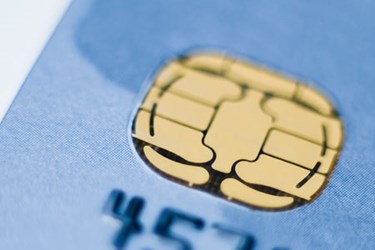Why Merchants Should Care About EMV

By Beatta McInerney, Business Development Manager, Payments, ScanSource POS and Barcode
It’s been more than a year since the October liability shift date and merchants in the U.S. are making headway in EMV adoption. In fact, according to VISA, more than 39 percent of all merchant locations now accept chip cards. Throughout the process there have been major hurdles, some lessons learned, some confusion, and even some success stories. Consumers in the U.S. are also starting to understand the extra security EMV offers, but still long for the speed of the swipe and go.
Today’s payment experience is still vastly different from merchant to merchant. Even the stickers, sticky notes, and taped messages vary from terminal to terminal stating whether or not they are chip-enabled.
The duration of the transaction takes is also very different. Consumers are used to swiping for instant approval, however it is actually amazing that in some cases it only takes three to six seconds to process a chip card when you consider everything that happens during an EMV transaction. On the flip side, there are some transactions taking north of 20 seconds, which can be devastating for a quick-serve restaurant during a busy lunch rush.
While consumers do want the extra security from EMV, they do not want to be inconvenienced. Even though Chip and Pin is not being implemented, there is still value in the extra security that a chip card provides. VISA also reported large, early EMV adopting merchants have benefited from an 18 percent reduction in fraud as of April 2016. In 2015, over 50 percent of the global credit card fraud occurred in the U.S. despite having only 25 percent of the credit card transaction volume. Without a continued adoption of EMV, that number would only rise, since the U.S. is one of the last to implement EMV.
Since the liability shift was announced, mobile wallet transactions have also increased. This could be due to the fact chip card transactions take longer and push consumers to use their wallets as a quicker process, but it is more likely because the ability to use your phone is more available with the new terminals that support the NFC functionality required by Apple Pay and Android Pay. This, combined with millennials entering the work force armed with their smart phones and comfortable with technology, is the main reason for the increase in mobile wallet adoption.
In addition to EMV and NFC, the adoption of P2PE solutions is also on the rise in the U.S. More and more end users are requiring their processor to provide additional security by encrypting all credit card data. Even though it is not a mandate yet, some RFPs are now requiring PCI P2PE validation. The new PCI P2PE requirements are also helping solution providers to obtain their validation. Because of this, more Key Injection Facilities now have standalone PCI P2PE certification in place.
There is good news regarding the time EMV transactions take for both consumers and merchants. Faster EMV is not only speeding up the time the card stays in a terminal, but is also speeding up the certification process, which previously served as the main source of delay of EMV implementation.
Although the experience is vastly different from merchant to merchant today, the EMV landscape will become more consistent over the next few years. Even with the easing of the chargebacks by VISA and American Express, merchants will continue to implement EMV, because, as seen in other countries, consumers will be expecting to use their chip cards in the most secure way possible.
